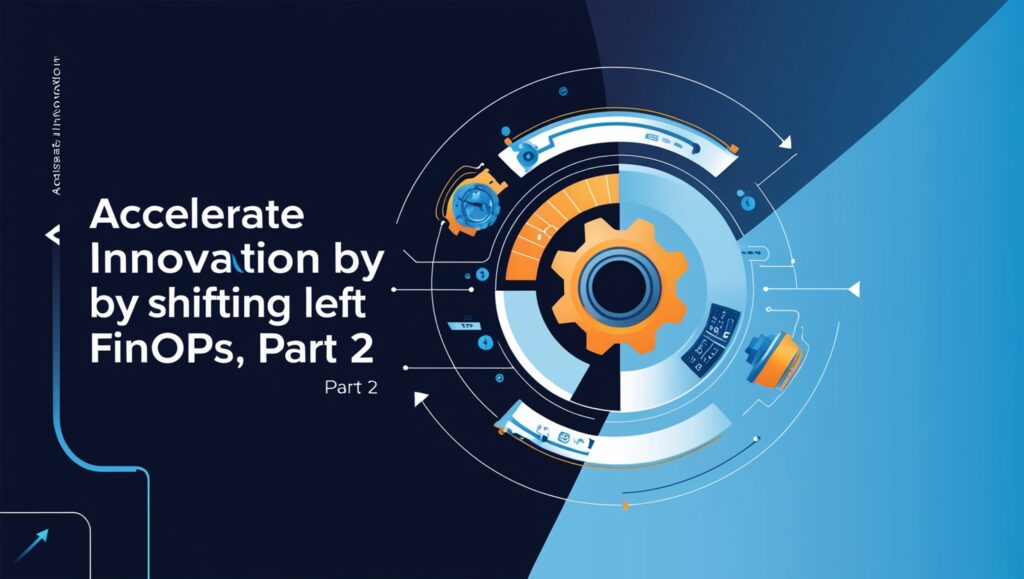In today’s fast-evolving tech landscape, businesses are under immense pressure to innovate quickly while staying cost-efficient. FinOps, short for Financial Operations, is revolutionizing the way organizations manage cloud spending, ensuring both innovation and financial control go hand in hand. By “shifting left” in FinOps—introducing financial accountability earlier in the development lifecycle—teams can innovate faster, cut unnecessary expenses, and avoid costly delays. Let’s dive deeper into what it means to shift left in FinOps, why it matters, and how you can start leveraging it to accelerate your organization’s growth.
What Does “Shifting Left FinOps” Mean?
The concept of “shifting left” comes from software development, where it refers to addressing tasks like testing or security earlier in the workflow. In the FinOps world, shifting left means embedding financial awareness and cost management into the early stages of development, design, and operations.
Instead of waiting until the end of a project—or worse, after cloud costs spiral out of control—teams proactively consider financial implications upfront. Shifting left in FinOps emphasizes collaboration between engineering, operations, and finance teams, enabling smarter decisions from the very beginning. It’s not just about budgeting; it’s about making cost-efficient innovation a core part of your organization’s DNA.
Why Should Teams Shift Left in FinOps?
Traditional cloud cost management often occurs too late. Teams deploy services, rack up expenses, and only later analyze what went wrong. This reactive approach slows down innovation, creates frustration, and leads to wasteful spending. By shifting left, teams identify potential cost pitfalls early, avoid unnecessary expenses, and ensure every dollar spent aligns with business goals.
Shifting left in FinOps is about empowering developers, engineers, and project managers with the tools and insights they need to make cost-aware decisions. When financial accountability becomes part of the workflow, innovation accelerates because teams aren’t bogged down by unanticipated expenses or rushed budget cuts.
How Does Shifting Left Save Money?
Shifting left in FinOps saves money by integrating cost awareness into the earliest stages of development. Here’s how it works:

- Prevents overspending on unnecessary resources: Teams can design systems that use resources efficiently, avoiding expensive over-provisioning.
- Reduces surprise bills: Proactive cost monitoring helps teams spot and address unexpected expenses in real-time.
- Increases operational efficiency: Collaboration between departments ensures the most cost-effective solutions are implemented, saving time and money.
- Optimizes long-term costs: Teams can plan for scalable solutions that minimize future financial risks.
Why Innovation Slows Without Shifting Left
Without shifting left, innovation often suffers from unnecessary bottlenecks. Developers focus solely on speed, leading to poorly optimized solutions that drive up costs. Finance teams, operating in reactive mode, implement budget constraints that derail promising projects. These inefficiencies force teams to spend more time troubleshooting and less time building impactful solutions.
Common Roadblocks to Innovation
- Siloed teams: Engineering and finance teams often work in isolation, resulting in misaligned priorities.
- Lack of visibility: Without real-time insights, teams struggle to track expenses or forecast costs accurately.
- Complexity of cloud environments: With multi-cloud and hybrid setups, understanding cloud usage and costs becomes increasingly challenging.
How Costs Impact Speed
When costs spiral out of control, organizations are forced to make difficult trade-offs. This might mean cutting critical features, delaying launches, or halting projects altogether. Shifting left ensures teams can innovate rapidly without being held back by financial constraints or last-minute cost-cutting measures.
Top Benefits of Shifting Left in FinOps
Shifting left in FinOps isn’t just about saving money; it’s about transforming the way businesses operate. Here are some key benefits:
- Accelerated Innovation: Teams can move faster when they aren’t constantly worrying about costs spiraling out of control.
- Enhanced Collaboration: Developers, finance, and operations teams work together seamlessly, breaking down traditional silos.
- Greater Accountability: Teams understand how their decisions impact costs, leading to smarter, more informed choices.
- Real-Time Insights: With cost data integrated into workflows, teams can make adjustments on the fly.
- Sustainable Growth: By optimizing cloud spending, businesses can reinvest savings into innovation and expansion.
Simple Steps to Accelerate Innovation Using FinOps
Shifting left in FinOps doesn’t require a complete overhaul of your processes. Instead, you can take small, actionable steps to embed financial accountability into your workflows. Here’s how:
- Educate Your Teams: Train developers and engineers to think about costs as they design and deploy systems.
- Integrate Cost Tools Early: Use tools like AWS Cost Explorer, Google Cloud Billing, or third-party platforms to track expenses in real-time.
- Set Guardrails: Establish budgets and policies that align with business goals, giving teams clear boundaries within which to operate.
- Foster Collaboration: Encourage finance, engineering, and operations teams to work together during the planning stages.
Start Small with Cost Awareness
It’s easy to get overwhelmed when trying to implement FinOps across your organization. Instead, start small by focusing on cost awareness. This means ensuring that every team member understands the basics of cloud cost management and how their decisions impact the bottom line.

Automate to Save Time and Effort
Automation is a game-changer for FinOps. By automating repetitive tasks like cost monitoring, tagging, and usage analysis, teams can save time and focus on higher-value work. Tools like Terraform and Kubernetes can help optimize resource allocation, while FinOps platforms like CloudHealth and Spot.io provide real-time insights into cloud spending.
Track Progress with Metrics
Tracking metrics is essential to measure the success of your FinOps strategy. Some key metrics include:
- Cost per workload: How much does each application or service cost?
- Idle resource percentage: The amount of unused cloud resources.
- Cost efficiency ratio: A comparison of spending to the value delivered.
By regularly reviewing these metrics, teams can identify trends, address inefficiencies, and stay on track.
Real-Life Examples of Shifting Left FinOps Success
Many companies have successfully accelerated innovation by shifting left in FinOps. For example:
- Company A reduced cloud spending by 30% by implementing real-time cost monitoring and automating resource allocation.
- Company B avoided project delays by fostering collaboration between engineering and finance teams, ensuring every deployment aligned with budget goals.
- Company C improved its cost efficiency by training developers on best practices for resource provisioning, saving millions annually.
Tools to Help You Shift Left in FinOps
A variety of tools can make shifting left in FinOps easier and more effective. Here are some popular options:
- CloudHealth by VMware: Provides real-time insights into cloud spending and usage patterns.
- AWS Cost Explorer: Helps teams monitor and analyze costs in the AWS ecosystem.
- Find out: Offers unified cost monitoring for multi-cloud environments.
- Spot.io: Automates resource allocation to minimize waste and reduce costs.
- Terraform: Simplifies infrastructure management and optimizes resource provisioning.
By leveraging these tools, organizations can streamline their FinOps processes and drive better outcomes.
The Bottom Line
Shifting left in FinOps is no longer a nice to have; it’s a necessity for businesses looking to stay competitive in the digital age. By embedding cost awareness into the early stages of development, teams can innovate faster, reduce expenses, and avoid costly missteps. The journey doesn’t have to be overwhelming—start small, leverage the right tools, and foster collaboration across teams. The results? Accelerated innovation, sustainable growth, and a stronger bottom line.
Are you ready to accelerate your innovation by shifting left in FinOps? Start today and transform the way your organization manages costs and drives value!


